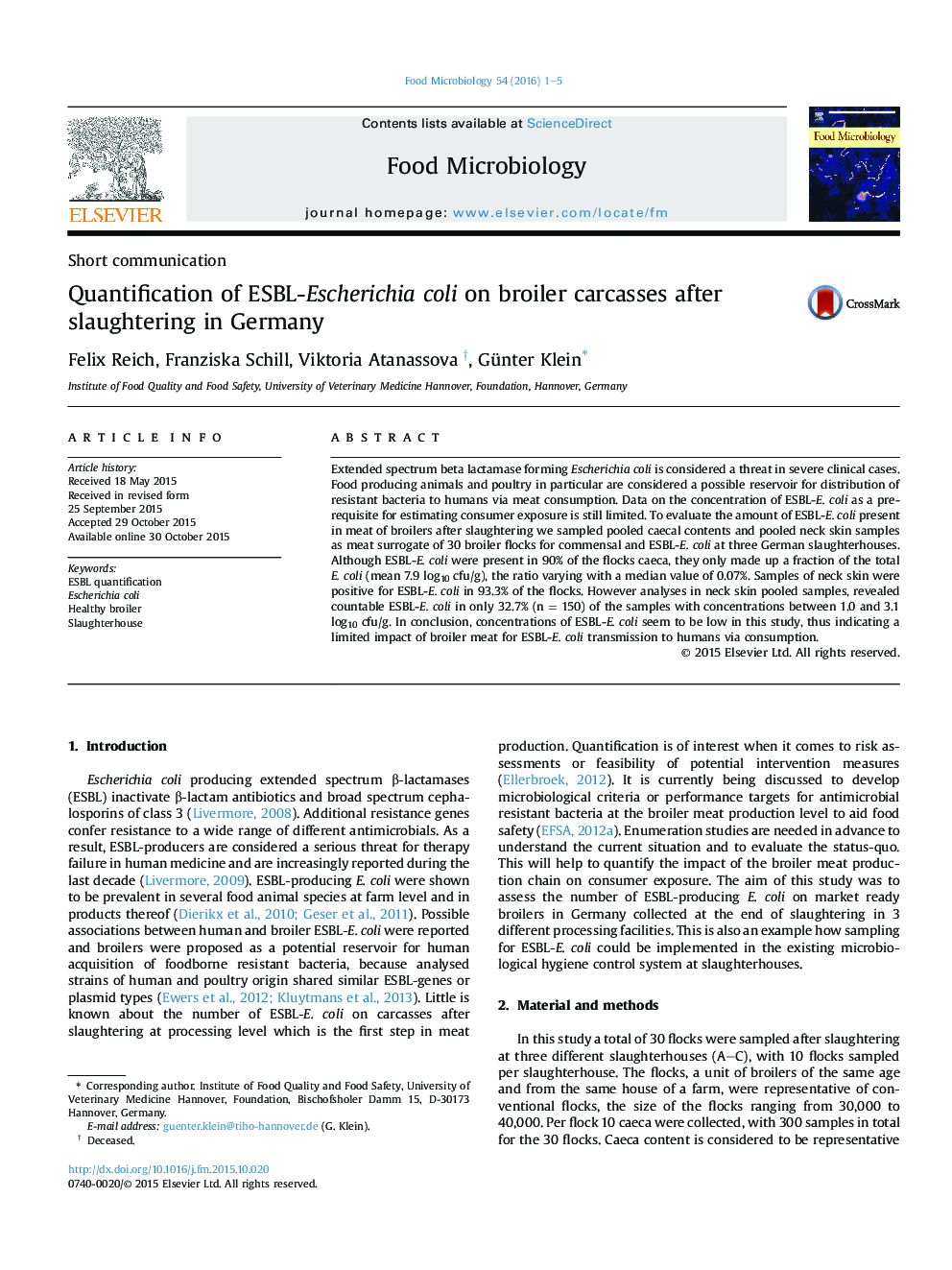| Article ID | Journal | Published Year | Pages | File Type |
|---|---|---|---|---|
| 4362622 | Food Microbiology | 2016 | 5 Pages |
•Thirty broiler flocks from German slaughterhouses were enumerated for ESBL-Escherichia coli.•Caecal contents and neck skin samples as surrogate for the meat were analysed.•ESBL-E. coli had high detection rates but low counts in the neck skin samples.•There was no correlation of total E. coli to ESBL-E. coli in caeca or in neck skin.
Extended spectrum beta lactamase forming Escherichia coli is considered a threat in severe clinical cases. Food producing animals and poultry in particular are considered a possible reservoir for distribution of resistant bacteria to humans via meat consumption. Data on the concentration of ESBL-E. coli as a prerequisite for estimating consumer exposure is still limited. To evaluate the amount of ESBL-E. coli present in meat of broilers after slaughtering we sampled pooled caecal contents and pooled neck skin samples as meat surrogate of 30 broiler flocks for commensal and ESBL-E. coli at three German slaughterhouses. Although ESBL-E. coli were present in 90% of the flocks caeca, they only made up a fraction of the total E. coli (mean 7.9 log10 cfu/g), the ratio varying with a median value of 0.07%. Samples of neck skin were positive for ESBL-E. coli in 93.3% of the flocks. However analyses in neck skin pooled samples, revealed countable ESBL-E. coli in only 32.7% (n = 150) of the samples with concentrations between 1.0 and 3.1 log10 cfu/g. In conclusion, concentrations of ESBL-E. coli seem to be low in this study, thus indicating a limited impact of broiler meat for ESBL-E. coli transmission to humans via consumption.
